When I look back at my school days, thinking about some classes still fills me with dread. One of those was History. Memorising endless British Kings and Queens and the dates they reigned. Dull, dull, dull, dull, dull. It’s strange though as I loved archaeology, but History classes just didn’t do it for me. It could also have something to do with the teacher, who had a habit of prowling around the class while barking facts at us, but that is another story. As I have ‘matured’ I’ve gained a bit more of an appreciation for history – without knowing where we’ve come from, how can we make sure we are heading in the right direction, or perhaps more pertinently these days “those who do not learn history are doomed to repeat it”. Anyway, I digress, and back to the science.
As part of my research into imaging science, UV photography has really captured my imagination. Recently I have started looking more at microscopy, and so the idea of doing some UV microscopy seemed like an obvious area to explore. However most objective lenses aren’t ideal for UV transmission, as they block some or all of it. Some of the standard microscope objective lenses, such as the Olympus UV fluorescence (UVFL) lenses have pretty good UV transmission around 360nm, but then it drops off to essentially nothing at 320nm and below. If you want to look at short wavelength UV, say at 320nm and below, then you start needing rather specialised objectives which are no longer based no glass lenses.
These UV lenses tend to be very expensive, especially when bought new, however they do occasionally appear on the second hand market. When they do become available, prices can vary wildly, often depending on whether the seller knows what they are, and whether collectors are getting into a bidding war. One manufacturer of these types of lenses was Leitz, and recently I was fortunate enough to find one of their 16x UV objectives on eBay from a seller in the US, which I quickly snapped up. When it arrived I started trying to track down any information about it, but couldn’t find anything definitive. Even asking a couple of experts on Leitz failed to reveal anything other than ‘they were made in very small numbers’. A few weeks after the 16x arrived, I was given the details of a dealer in Germany – Optik Online, here – who had another couple of the Leitz UV lenses available. Now, for those of you who haven’t looked here, this is an amazing shop, and somewhere an optics geek can spend hours. It turned out that he had two more of the Leitz UV lenses, a 40x one and 100x one (both glycerin immersion lenses), and I quickly put in an order for these as I hadn’t seen them anywhere else. Here they are;
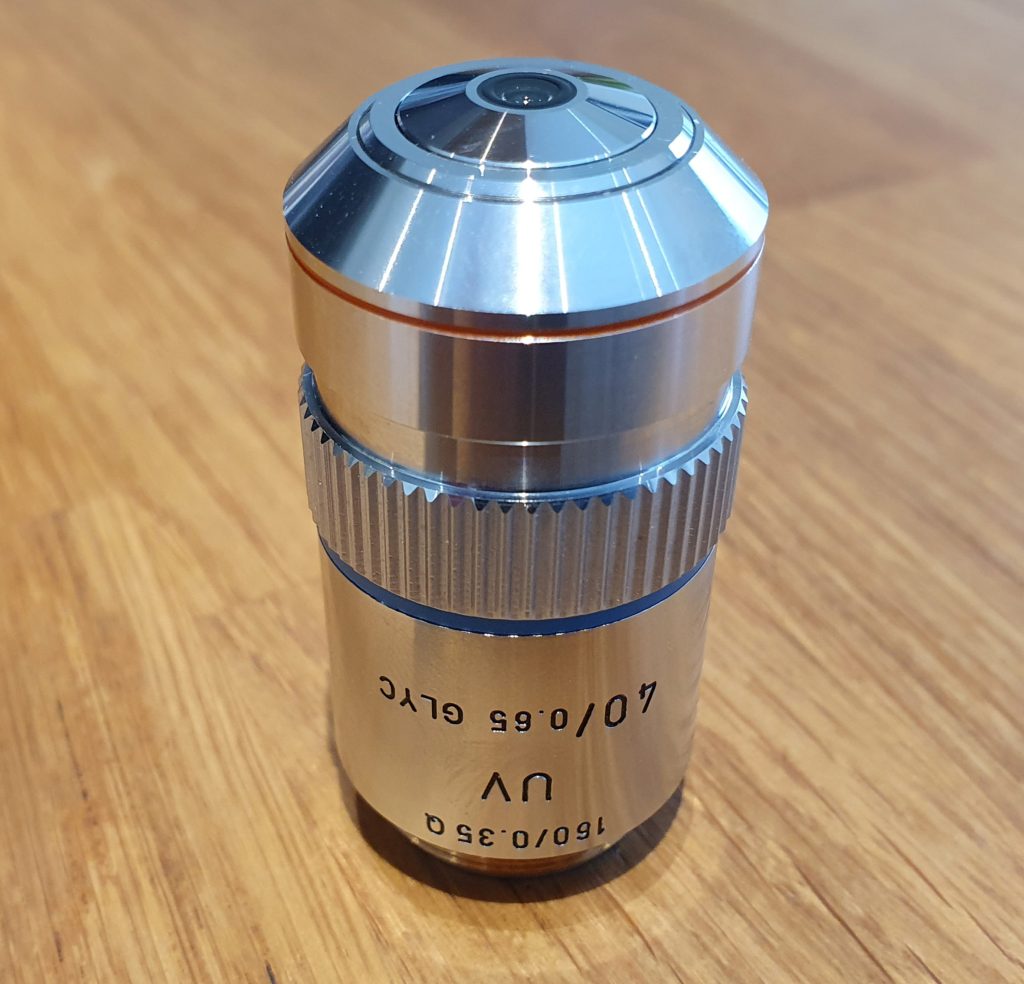
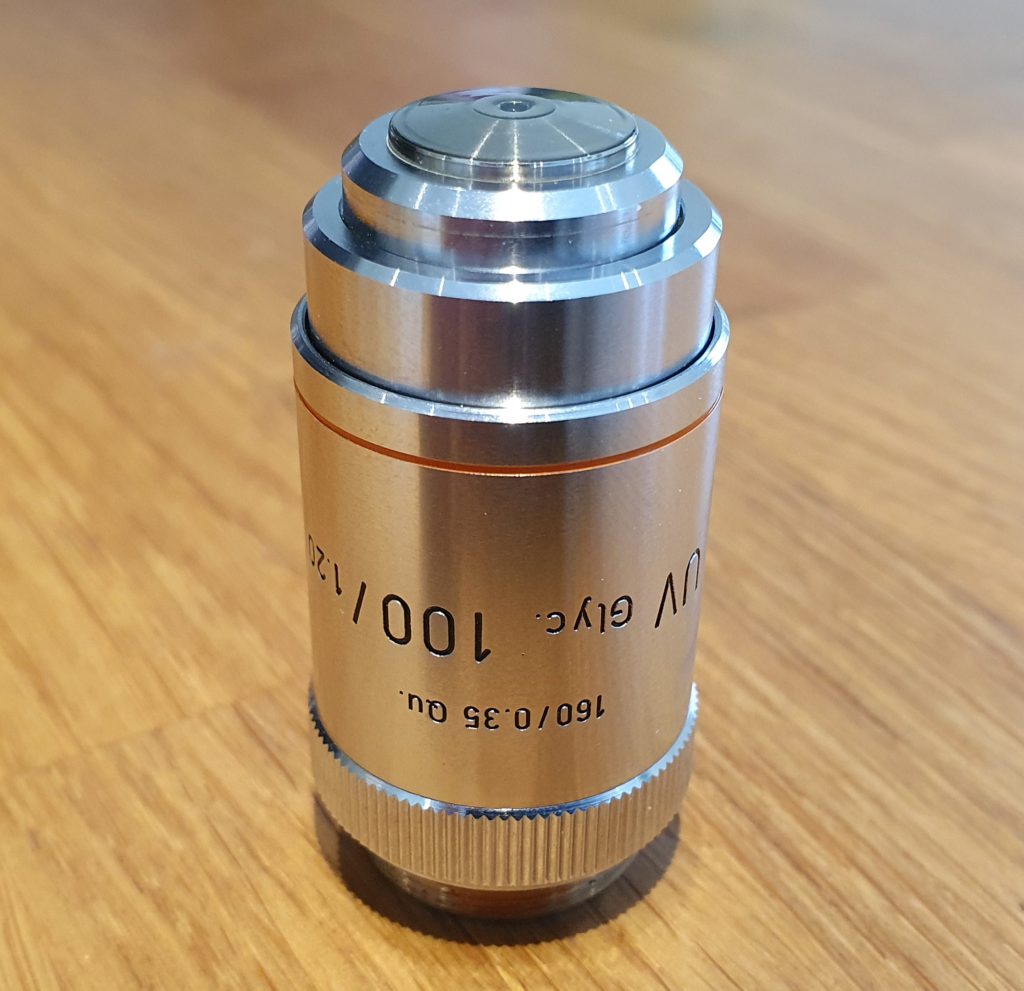
These 2 seemed to be a similar style to my 16x one, but unfortunately the dealer didn’t know anything else about them. I did manage to find a Leitz brochure from 1985 which mentioned three UV objectives, with the same magnifications as mine, and an excerpt from this is shown below;
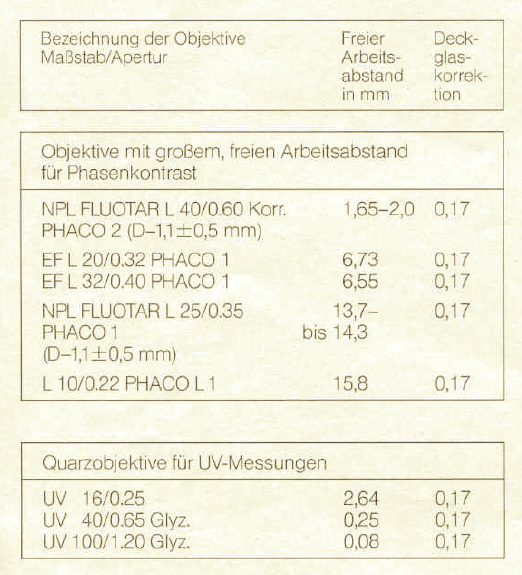
In the catalogue to UV lenses are called ‘Quarzobjektive’ but while they magnifications and NA values matched my lenses, the cover slip thickness is different (mine say 0,35mm quartz, while these say 0,17mm). It does seem strange though, and I’m actually wondering whether the catalogue has an error in it regarding the cover slip thickness. More research to be done there, to hopefully get to the bottom of that…..
While looking through the Optik Online site, I also found a Leitz Quartz 300x objective, which looked very interesting, so included that in my order. Here is the lens;
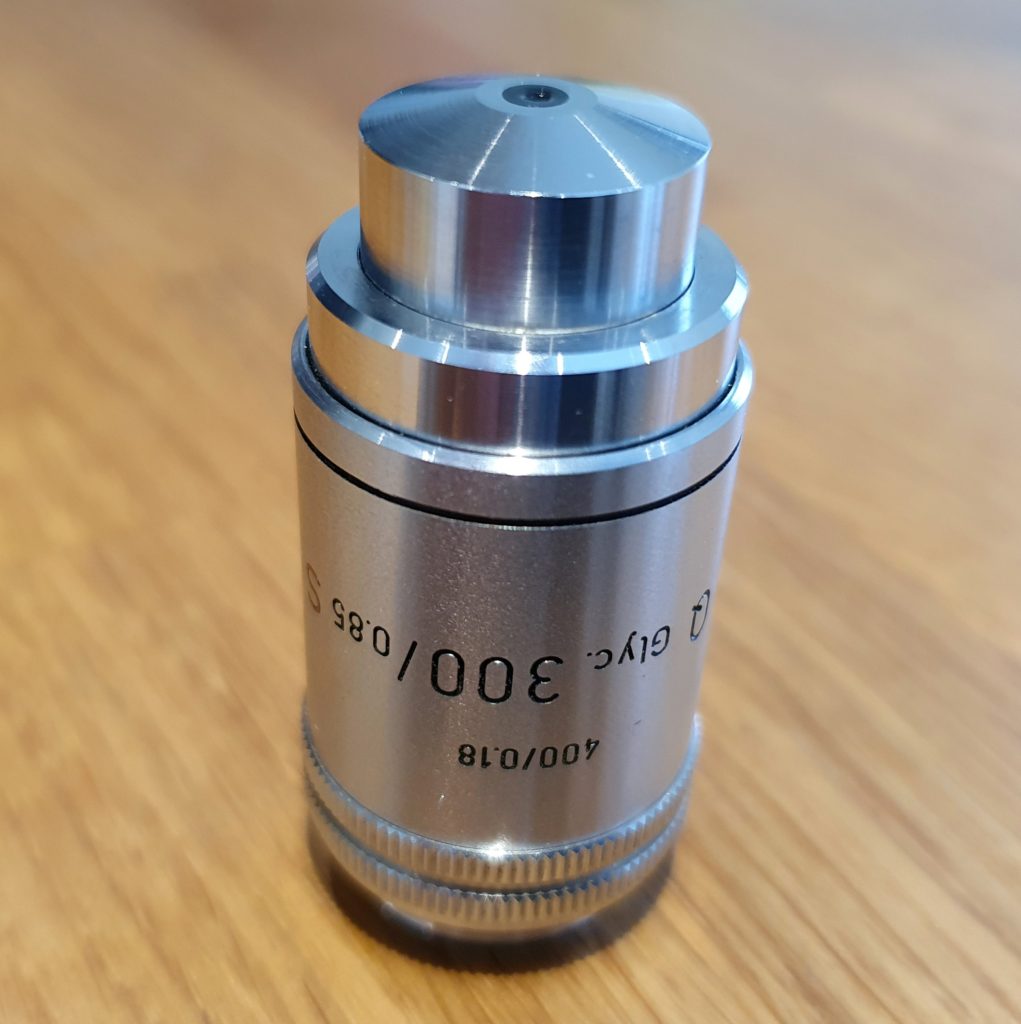
Now this one is a bit different in appearance to the other ones, and it is also meant for a different design of microscope (the tube length on this one is 400mm rather than 160mm on the others). After a bit more detective work, I found some information on something similar from the 1960s, and that it is likely to be a reflecting objective rather than a reflex design (although I wont be dismantling it to check that). Here’s a copy of the brochure detail from 1967;
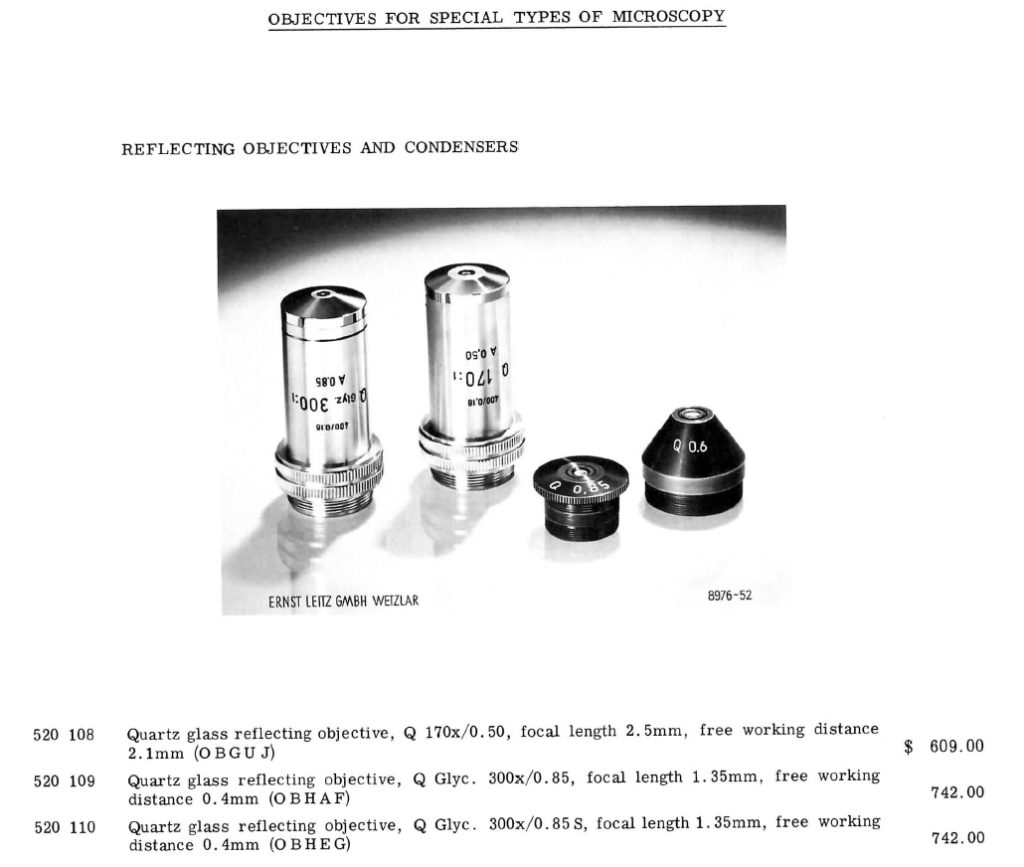
The objective seems to be similar to part number 520 110 in the catalogue, although the actual design looks a little different.
Optik Online also had a 32x Zeiss Ultrafluar lens which is also designed for UV imaging down to 220nm, so that is coming over for testing too and I’ll share more about that once it arrives.
Looking to older scientific equipment for inspiration is fascinating, and this is an area of history that certainly gets my attention (if only we did this at school). The designs that these guys were making 30+ years ago are amazing, and still perfectly usable today for research. If you can find them, and that can be a quest in itself given they were never made in huge numbers, they are often available at a fraction of the cost of new lenses. Digging into their history can also be a challenge – I’ve been able to find some information on these lenses, or at least similar versions to them, but even so I’m not completely sure that what I’ve found is exactly right. If you know any more about these, such as when they were from and what they were designed for, I’d love to hear from you.
Thanks for reading, and enjoy your research.
